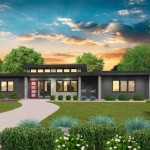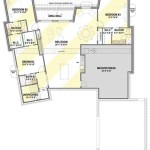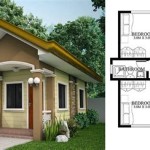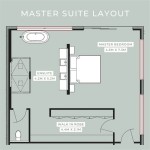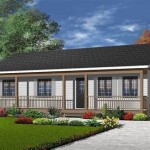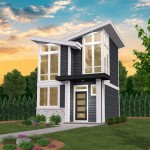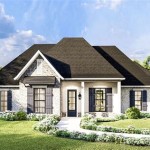2-Story Living Room House Plans: Elevating Design and Functionality
Two-story living room house plans offer a unique architectural feature that dramatically alters the feel and functionality of a home. This design element, characterized by a high ceiling and often a second-story overlook, creates a grand and open space that serves as a focal point for the entire house. Choosing a two-story living room involves careful consideration of various factors, including lifestyle, aesthetic preferences, and practical implications. This article explores the benefits, considerations, and design options associated with incorporating a two-story living room into a house plan.
Enhanced Natural Light and Ventilation
One of the primary advantages of a two-story living room is the increased access to natural light. The taller windows typical of this design allow sunlight to penetrate deeper into the home, creating a brighter and more welcoming atmosphere. This abundance of natural light can reduce the need for artificial lighting during the day, leading to energy savings. Furthermore, the higher ceilings promote better air circulation and ventilation, contributing to a healthier and more comfortable indoor environment.
Creating a Sense of Grandeur and Spaciousness
A two-story living room inherently adds a sense of grandeur and spaciousness to a home. The elevated ceiling creates a dramatic visual impact, making the room feel larger and more open than a standard single-story living room. This spaciousness can be particularly appealing for entertaining guests or simply enjoying a sense of openness within the home. The vertical space provides an opportunity for architectural details such as exposed beams, decorative lighting, and large-scale artwork, further enhancing the aesthetic appeal.
Connecting Living Spaces Visually
Two-story living rooms often serve as a central hub, visually connecting different areas of the home. A second-story overlook, whether a balcony or a hallway, creates a visual link between the upper and lower levels, fostering a sense of connection and interaction. This design element can be particularly beneficial for families, allowing for communication and interaction even when individuals are on different floors. The open design can make the home feel more cohesive and less compartmentalized.
Considerations for Heating and Cooling
While the high ceilings and open space of a two-story living room offer numerous benefits, they also present challenges in terms of heating and cooling. The larger volume of air requires more energy to heat and cool effectively. Proper insulation and strategically placed windows are crucial for maintaining a comfortable temperature and minimizing energy consumption. It is important to consider energy-efficient heating and cooling systems specifically designed for high-ceiling spaces.
Furniture Placement and Design Choices
Furnishing a two-story living room requires careful planning to maintain balance and proportion. The scale of the furniture should complement the size of the room, avoiding pieces that appear too small or dwarfed by the high ceiling. Strategic placement of furniture can define different zones within the open space, creating areas for conversation, relaxation, and entertainment. Area rugs can also help to anchor furniture groupings and define distinct areas within the room.
Privacy Considerations with Second-Story Overlooks
While a second-story overlook provides a visual connection between floors, it can also raise privacy concerns. Careful consideration should be given to the placement and design of the overlook to ensure a balance between openness and privacy. Strategies such as partial walls, strategically placed plants, or decorative screens can be employed to create a sense of separation and privacy without completely closing off the space.
Maintenance and Cleaning
Maintaining and cleaning a two-story living room can present practical challenges. Cleaning high windows, ceiling fans, and light fixtures may require specialized equipment or professional cleaning services. Dust and cobwebs can accumulate in high corners and crevices, requiring regular attention. It's essential to consider these practical aspects when deciding on a two-story living room design.
Variety of Architectural Styles
Two-story living rooms can be incorporated into a variety of architectural styles, from traditional to contemporary. The design of the room can be tailored to complement the overall aesthetic of the house, creating a cohesive and harmonious look. Whether it's a rustic farmhouse, a modern minimalist home, or a classic Victorian, a two-story living room can be adapted to fit the desired architectural style.
Budgetary Implications
Building a two-story living room typically involves higher construction costs compared to a standard single-story living room. The increased volume of space, larger windows, and specialized heating and cooling systems contribute to the higher expenses. It's important to factor these costs into the overall budget when considering a two-story living room design.

2 Story Living Room Vaulted Bedrooms 2346jd Architectural Designs House Plans

Quaint 3 Bedroom 2 Story Cottage Ideal For Lake Setting Floor Plan Style House Plans

Two Story House Plan With Down Stair Master I D Make A Second On The Upper Floor Add Plans Layout 6 Bedroom

Modern Open Floor House Plans Blog Eplans Com

7 Great Room Floor Plans With Incredible Photos Dfd House Blog

Two Story House Plan Examples

Four Bed House Plan With Two Story Living Room 23724jd Architectural Designs Plans

Beautiful 4 Bedroom 2 Y House Plans New Home Floor Plan

2 Story Modern House Plans Houseplans Blog Com

Modern Style House Plan 7561 Joshua 2


